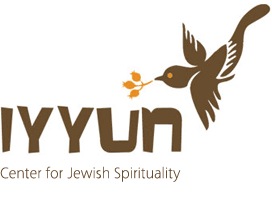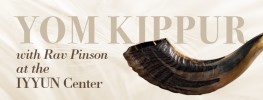The Name Purim
The simple meaning of the name Purim:
- When we offer a name for an object or subject, we are trying to convey in the least possible words the function, utility or description of this object or subject. Clearly, to fully grasp the power and unpack the spiritual significance of this holiday, we need to explore its name, Purim.
What does the word purim mean? Purim is a Persian, and more precisely, Akkadian word for lotteries. It was Haman who threw a lottery to determine the date to implement his malicious plan, and as such, “they called these days Purim on the name pur - lot.” (Ester 9:26) But why name a holiday, a time for celebration, with a word that implicitly reminds us of the plot to harm us?
Mordechai vs. Haman:
Let us delve deeply and journey to the heart of the issue. Two of the main correctors of the story are Mordechai and Haman. The unfolding tale of Purim pins the hero Mordechai against the villain Haman, one embodying all the goodness and kedusha/ holiness, the other all the negative and kelipa/the concealed energy. Each one aspired to achieve the diametric opposite: one willed destruction, the other redemption; one wanted to harm and destroy, the other wanted life and salvation.
The question is, from whence does the power of destruction come? Being that everything within creation is a manifestation of the Divine, from where does a person access such diabolical powers? What gives strength and rise to kelipa? While we may have the freedom to choose as we desire, the question remains: what is the root of this choice? What aspect within the creator’s interaction with creation leaves room for us to freely choose, and choose, if so willed, personal destruction or the destruction of another?
The Internal & the Transcendent Light:
To fully wrap our minds around the issue, we need to contemplate the creator-created relationship.
As the macro is reflected into the micro, a parallel can be drawn between the human being and creation as a whole; just as our souls, our transcendent spirit permeates and simultaneously transcends our everyday existence, the same is with the creator’s light, which raises, sustains, and animates creation. There is an or makif — a surrounding light — and there is or penimi — measured and internal light. One is the energy manifested as immanent and the all pervasive, the palpable presence of the divine, the other is a divine energy that we sense is transcendent of all details of creation. These two are also referred to as or memale kol almin — energy that fills creation — and or sovev kol almin — the energy that encompasses and hovers above, a light that cannot be grasped or fully assimilated.
The world of law and order is a reality of memale. In this paradigm, everything is properly defined and appropriately placed. Memale is the world of duality and the binary: up-down, right-left, good-evil.
The relatively observed orderly fashion of the universe, which allows for scientific probing, is a product of memale. The energy that prods organisms toward their particular advancement and toward more intricate measures of complexity and diversity is memale. Sovev does not get involved, as it were, in the intricateness of creation; yet it is sovev that gives rise to the essence of existence. Sovev is the creator aspect of the divine creating, but reality on the level of sovev is still mere ‘potential,’ not distinct in image or form. Formation and articulation occurs on memale. One creates substance and the other fashions form. It is extremely difficult to fathom substance without form; yet in the process of creation from divine nothingness, a somethingness appears, a something that is not individuated nor particularized—raw substance—, and only later in the progressive process does substance take on full form.
Beyond the Binary, the Source of Concealment:
Being utterly transcendent of all distinctions and subjective evaluations in the world of sovev “darkness is as light.”
Speaking of the primordial light of sovev, a Chassidic teacher once said in Yiddish, “Dart vu eidelkeit iz kein kli nit, iz gerabkeit kein setira nit” — “there were refinement is not a vessel coarseness is neither a contradiction.” Negativity can exist because there is a grade of light that is detached from any perception or subjective definition. In the world of sovev, there are no contradictions or conflicts as there is no evaluation or interpretation. Everything simply “is.”
From the vantage point of memale, a world of order, a universe of cause and affect, righteousness breeds goodness and negativity generates its ilk. Haman, who represents the archetype of evil, the embodiment of kelipa, intuitively knew on a deep sub- or super-conscious level that if he wanted to bring destruction upon the Jews, he needed to evoke and harness a power that is beyond memale or penimi, beyond distinctions, beyond good or evil. He knew that he needed to penetrate a makif space, which, apparently, is not interested in the details of the created reality.
Random Lots:
Haman aspired for makif. From this detached space, everything simply “is,” and so even the righteous can suffer, for nothing has to follow a deterministic paradigm of cause and inevitable effect. It’s a world where everything is equal and nothing matters more than the other. Throwing a lottery bespeaks of this very same concept. In a lottery, all pieces are equal. Otherwise, why involve a lottery and not make a conscious decision? The mechanism of a lot transcends predictability and rationality. Before a lot is cast, it could go either way; we cannot, apparently suppose that one person is fit to win the lottery more than the other.
Haman threw a lottery, a random act of throwing a dice to determine the day of their demise. By casting a lottery he was hoping to hook into the transcendent that is ‘above good and evil.’ A spiritual place where he imagined everything is possible, and there are no distinctions between good or evil.
Haman intuited that there is a super-rational plane from where good and evil can draw equally — a sphere where no moral strings are attached, and good and evil are equally capable of receiving and being nourished. He wished to top into a spiritual space that exists outside the context of creation, and a place where, “As for your many sins, can they harm Him?…and if you acted righteously, will it benefit Him?” (Job 35:6-7). That is why — perhaps unbeknown to his conscious mind — he cast a lot.
Tree Fifty Feet High:
Appropriately, as a means to obliterate the righteous, he anchored a fifty-foot high tree, which he desired to use to hang Mordechai. Seven is the number connected with the natural order, as in the seven-day cycles of creation, which themselves are rooted in the seven lower sefriodic influences. Each of the seven contain within them seven. Principally, up until the number forty-nine represents realms within the natural order of creation and since Haman wanted to reach the makif, that which is beyond all comprehension, he erected a fifty-foot tree.
Exile:
Generally speaking, being in exile, physically, emotionally or spiritually is rooted in makif. In an exile frame of mind, where one is estranged and disaligned, nothing is clear, and everything is blurry, thus allowing good and evil to reign. Exile is like a dream state, where opposite emotions or events occur simultaneously or in rapid succession. Psychologically in a condition of exile one moment, one can feel on a high and everything will make sense, while the next experience is a devastating low, or vice versa.
King Achashveirosh:
In the unfolding tale, the king, Achashveirosh, seems to be a character that is the most impartial. He does what they tell him to do. First he kills his wife on the advice of his advisor, then he kills the advisor on the advice of his wife. King Achashveirosh also represents the king of the world, the one upon whom we can say, “achris ve’reishis shelo - the end and the beginning is His.” The King represents makif, keser- crown above head, a spiritual space where everything is possible, as everything simply “is” without subjective evaluation.
When Haman, speaking of the Jewish people, says to the King; “There is a certain people scattered abroad and dispersed.” (3:8.) The phrase “there is” in Hebrew is yeshna, which can also be read as to sleep. Haman is alluding to the fact that exile is a sleeping state. The people are asleep, and he is simultaneously appealing to the King, who is asleep, to the level of keser, of indifference, beyond caring, and thus everything and anything is possible.
Yet, the same force of makif that Haman desired to imply to render insignificant order and ‘law,’ to disregard a universe where results are in direct consequence to actions and where righteousness breeds blessings, was turned against him. Makif is unrelated to forms, but that means transcendent of all forms, both old ones and new ones. His decree came about through makif, and it was also via makif that his decree was annulled.
From form to formless to form:
As mentioned, first an idea exists in makif and then individuates as a distinct shape and form in penimi. On a physical plane, where the physical mirrors the spiritual, if there is a desire to alter or change an image or form, the way to do it is to first uncreate the shape and then shape a new one. Say you want to change a silver plate to a cup, first you need to flatten out the old form and then create the new one. On a spiritual level, it works much the same. To alter reality, to change that which is, one needs to ‘elevate’ the object/subject to the state of potential, and then rearrange and manipulate the energy, thus engendering a new manifestation to emerge.
When Ester tells the king that he, together with Haman, are invited to the feast she has prepared, she equates the king with his minister, “and the King and Haman,” and what she is doing is shaking them out of their ‘forms’ and perceiving them in their potential state. Doing so, she evokes their formless condition and, consequently, causes the powerful negative form of the wicked Haman to dissolve. He went to makif to cause harm, but in makif everything and nothing goes.
Ayin & Yesh – non-being & being:
Ester journeyed inward and upward into the ayin- the nothingness that precedes the yesh – somethingness, and through that manipulated a new reality into being. On a surface, external level, we call ourselves ani – ‘I,’ and yet, this ‘separate’ I is but a mirage, a transient image that labors under the notion of separateness and detachment, and the only genuine I there is, is the Creator, the essence of existence, the true ‘I,’ which becomes manifest in all individuated ‘i’s of people. To connect with the essential I, the Ultimate yesh, we need to first deconstruct, dismantle the false ani- I and make from the ani an ain, a nothingness. Then, we can reemerge as a divine expression, as the real ani- I, as in Ani Hashem – I am God.
When Ester beheld the bleak situation they found themselves in, she saw that in the manifested reality of yesh, everything seemed hopeless and gloomy. She says that she will go to the king though uninvited, “and if I perish, I perish.” (4:16.) Though the consequence of appearing not welcomed in front of the king was death, she decided to go, nonetheless. Doing so, substituting in the most dramatic of ways the ego/ani, for the ain/egolessness, she empowered a miracle to occur, and what a miracle! In her egoless state, literally putting herself on the side, the ultimate yesh was able to be revealed.
The Curse becomes the Source of Blessing:
Indeed, a radical transformation of events occurred. The negative itself became the source of blessings. The pur - the lot that was thrown became the source and the reason for their joy. The old forms crumbled, as the word pur from the root porer – to crumble connotes, and a new reality was birthed, as in Purim, from the root word pru – to be fruitful, as in pru u’revu – ‘be fruitful and multiply,’ which is the injunction to procreate. Haman wanted to wipe them out and make an end to them, and what occurred instead was pru u’revu – they multiplied, proliferated and became even stronger. This set into motion an even greater redemption with the return of many to Israel from the Babylonian exile and the construction of the second temple in Jerusalem.
Beyond being Beyond Good & Evil:
On a most profound level, Haman failed to understand that on the deepest realities, that which is beyond being ‘beyond,’ beyond makif, beyond the infinite, Essence chooses “the souls of the righteous” over the unrighteous. This choosing is not because righteousness impinges on or colors the Infinite’s bias, rather because there is a ‘desire’ to choose this way. The Divine choice of light as the path of righteousness was not a conscious, deliberate one, rather a spontaneous choice.
It is a choice that is rooted in the essence of the divine, a free unforced condition, and not because the actions below inevitably affect the position above and impel a direct correlative reaction. Why is there choice, radical choosing? Just because.
Duality within a Context of Oneness:
Sovev is the infinite light, memale the finite. Whereas these are two manifestation of the Creator, they are both not the divine itself. The ‘essence’ is termed etzem or atzmus – pure essence, that which is beyond finite, but also beyond infinite, and even beyond the definition as the source of the infinite light. Clearly, any form of speaking of or conceptualizing atzmus is itself a definition. And still, atzmus elects to desire “the souls of the righteous.” Why? Just because it so desired. In fact, ‘why’ is not a valid question. ‘Why’ only exists in a universe of causality, separation and the binary.
Now it becomes clear why the Persian name of Purim was chosen, and why a name that apparently bespeaks of the negative captures the essence of the holiday. Purim celebrates the ultimate form of transformation, going to the root of makif, and instead of allowing the bringing down of negativity, positively manipulates a life affirming consequence, to choose within a place of duality and the possibility of opposites the path of light and life.
Celebrating the Past in the Present:
Life is lived in the eternal present. When we celebrate a holiday, we are not merely celebrating past events, remembrance of things past. nostalgic commemorations and feel-good ruminations; rather, we are celebrating the reoccurring events in the now. These are days, as the scroll of Ester declares, that are nezcarim v’naasim – remembered and performed. By remembering them, they are actually being re-performed. Through remembering, the very same divine force that existed back then and empowered the miraculous exists now, and in an even more powerful form since “matters of holiness are only in the motion of increase.” All the holidays are called Yom Tov’s, literally, good days. On the holiday, we experience an extra measure of blessings, sourced in the ultimate source of all goodness.
With blessings for a happy, joyous and uplifting Purim.








